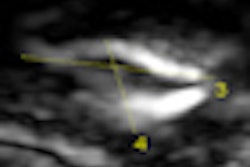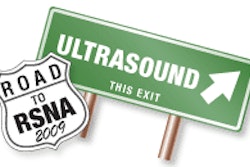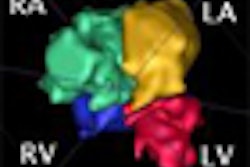Ultrasound-guided cortisone injections may effectively treat a common, painful condition caused by injury to the tendons in the buttocks that typically affects middle-aged to elderly women and young active individuals, according to a study published in the January issue of the American Journal of Roentgenology.
Lead study author Dr. Étienne Cardinal from the University of Montreal's Hospital Center said the underlying causes of gluteus medius tendinopathy remain unclear, but probably are multifactorial and involve mechanical and degenerative processes (AJR, 2010, Vol. 194:1, pp. 202-206).
Researchers prospectively evaluated 54 consecutive patients (48 women and six men, with a mean age of 54.7 years) with a clinical diagnosis of gluteus medius tendinopathy.
A hip ultrasound study was performed followed by a gluteus medius peritendinous ultrasound-guided injection of 30 mg of triamcinolone combined with 3 mL of bupivacaine 0.5% using an anterior oblique coronal plane.
One month after treatment, participants were reassessed clinically and were asked to quantify their pain using the visual analog scale (VAS) pain score. They also were asked to rate their satisfaction with the outcome of the injection using a four-point rating scale, ranging from "very satisfied" to "very dissatisfied."
The researchers found a 55% average reduction of pain level before versus after treatment (mean VAS score of 6.4 before treatment, compared with 2.9 after treatment). One month after treatment, 72% of the patients showed a clinically significant improvement in pain level, which was defined as a reduction in the VAS pain score of 30% or more. In addition, 70% of patients were satisfied with the results of the intervention.
Cardinal noted that the advantages of ultrasound over fluoroscopy include its soft-tissue imaging capabilities that allow a diagnostic study to be performed before cortisone injection.
As a noninvasive, nonionizing imaging technique, ultrasound also allows continuous monitoring of the needle position, he added, which facilitates the performance of safe and precise cortisone injections.
Related Reading
Radiography fails to offer diagnosis for sudden hip pain in kids, April 1, 2009
MRI finds hip injuries in karate fighters, March 7, 2009
Physicians less likely to discuss joint replacement with older patients, January 22, 2009
Greatest pain comes four hours after MR arthrogram injection, December 26, 2008
Comprehensive musculoskeletal US exam offers most value, January 3, 2008
Copyright © 2009 AuntMinnie.com



















